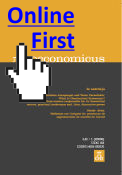Energy Intensity in CIS Economies: Insights into Convergence with OECD Benchmarks
DOI:
https://doi.org/10.2298/PAN221012008BKeywords:
Energy intensity , Economic growth , Unit root , Nonlinear stationarity , ConvergenceAbstract
This study evaluates energy intensity convergence in Commonwealth of Independent States (CIS) economies in comparison to the OECD average from 2000 to 2019, utilising β-convergence and σ-convergence analyses based on conventional unit root analysis alongside the KSS stationarity approach, which accounts for data nonlinearities, and the Phillips–Sul club convergence procedure. The results indicate that most CIS countries did not achieve energy intensity convergence during the period under review. Furthermore, while the Phillips–Sul test classifies all studied countries, including the OECD-20, into a single convergence club, it only presents weak evidence of significant convergence. This limited convergence is likely hindered by the continued presence of Soviet-era manufacturing infrastructure in many CIS economies. From a policy perspective, the development of comprehensive economic frameworks that incorporate legal, institutional, technical, and financial reforms, supported by targeted investments in research, cutting-edge technologies, and updated standards, is essential to significantly boost energy efficiency and effectively address challenges on both the supply and demand sides.
JEL: C10, C12, Q43, Q48






